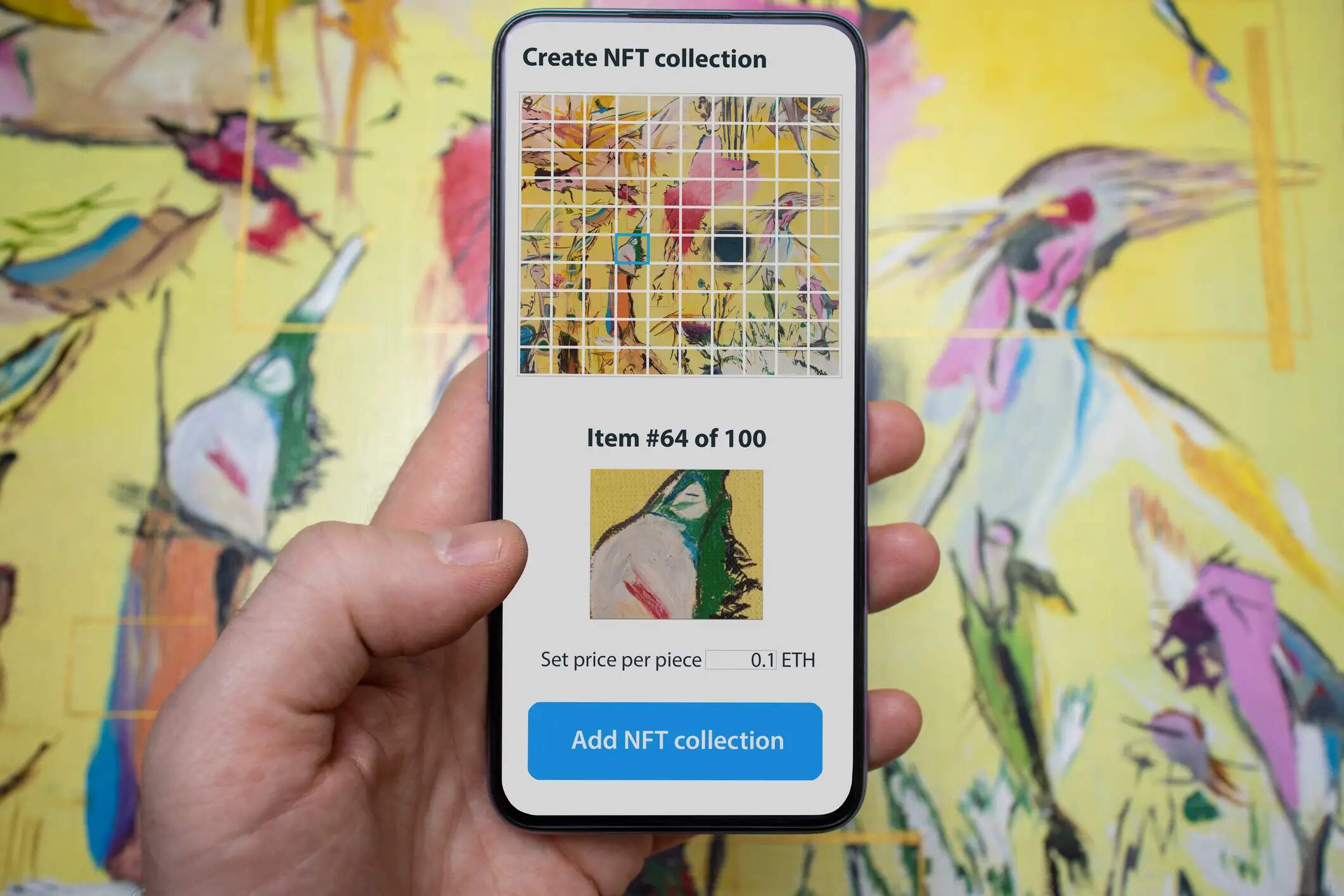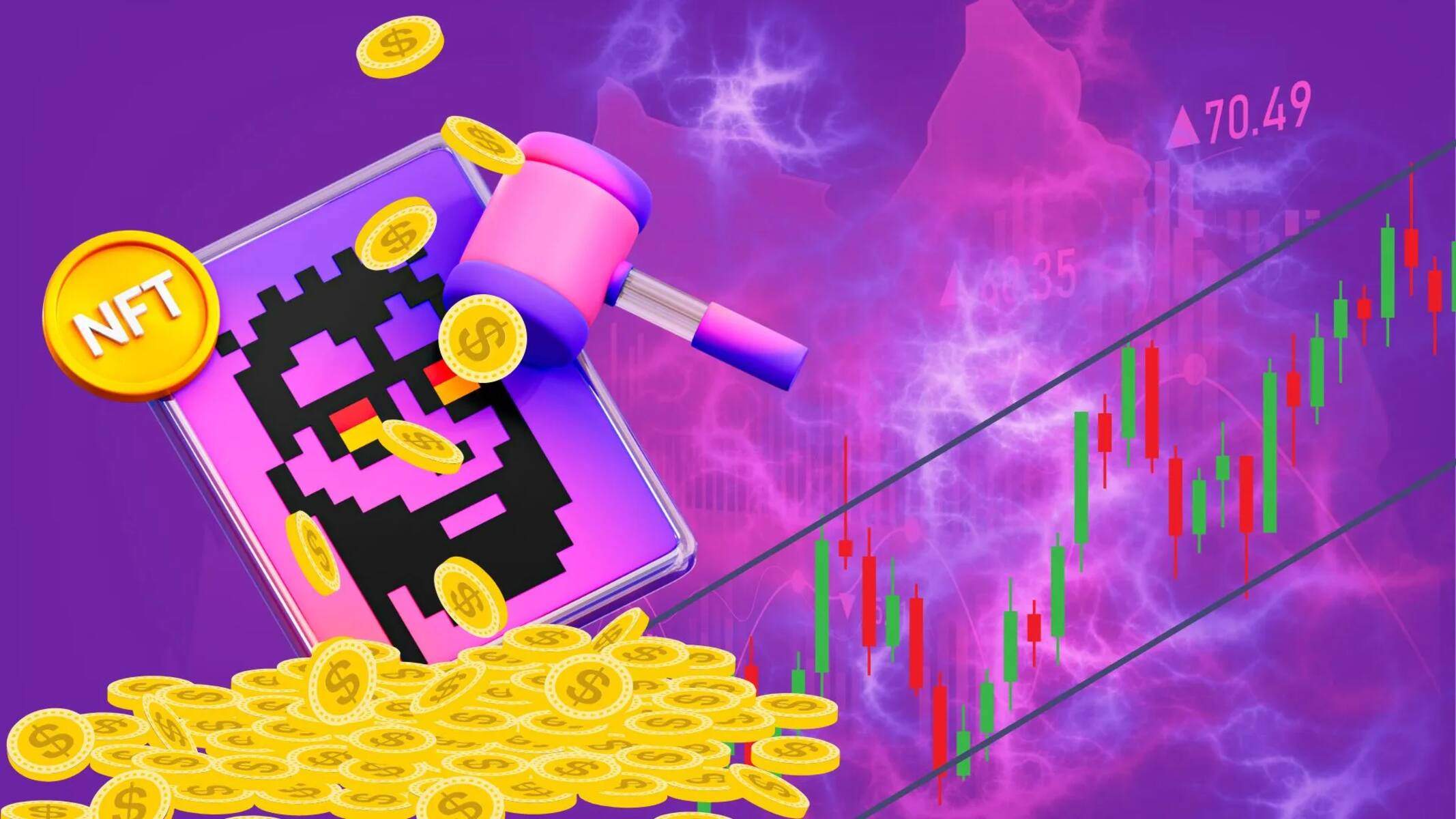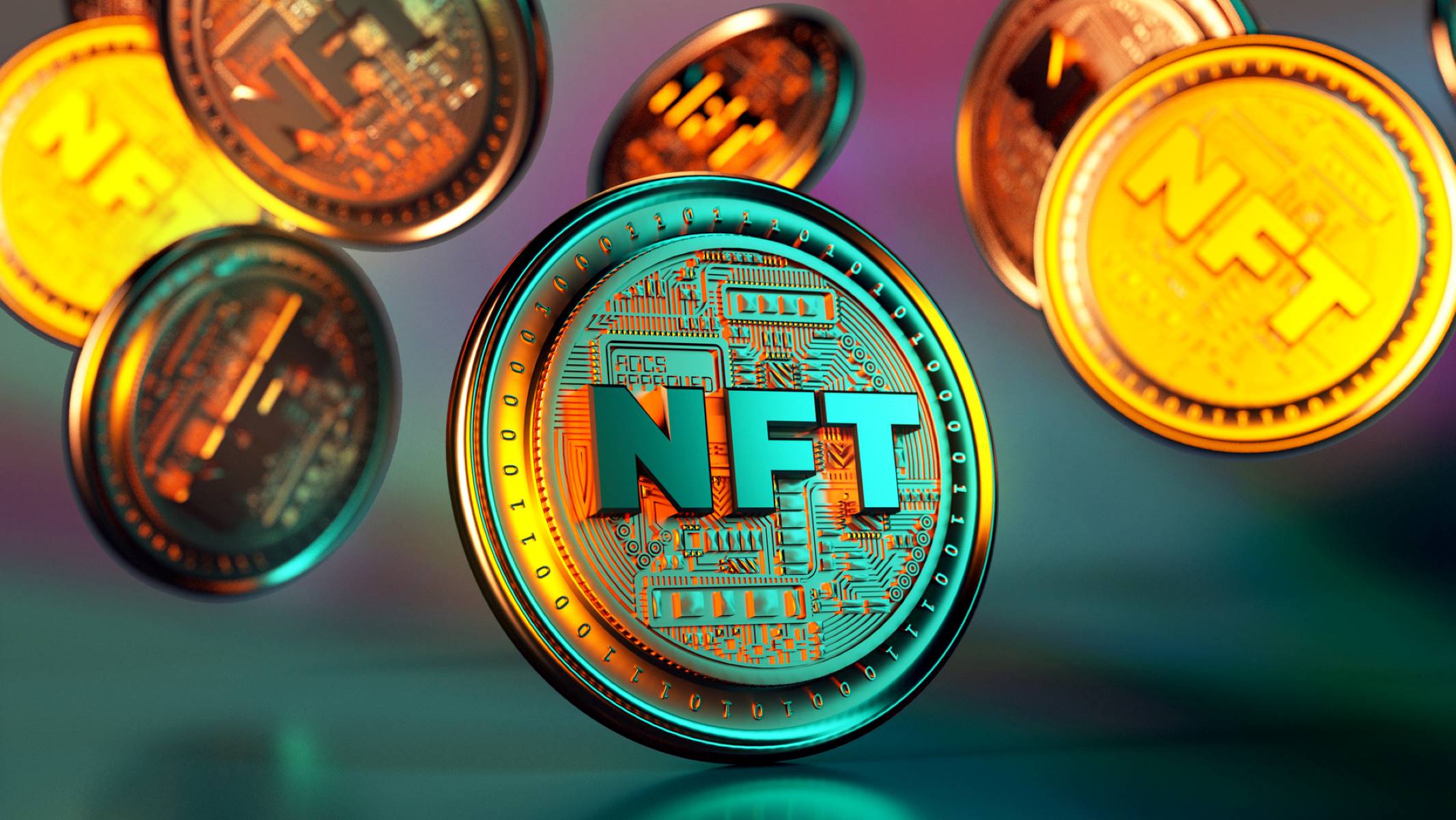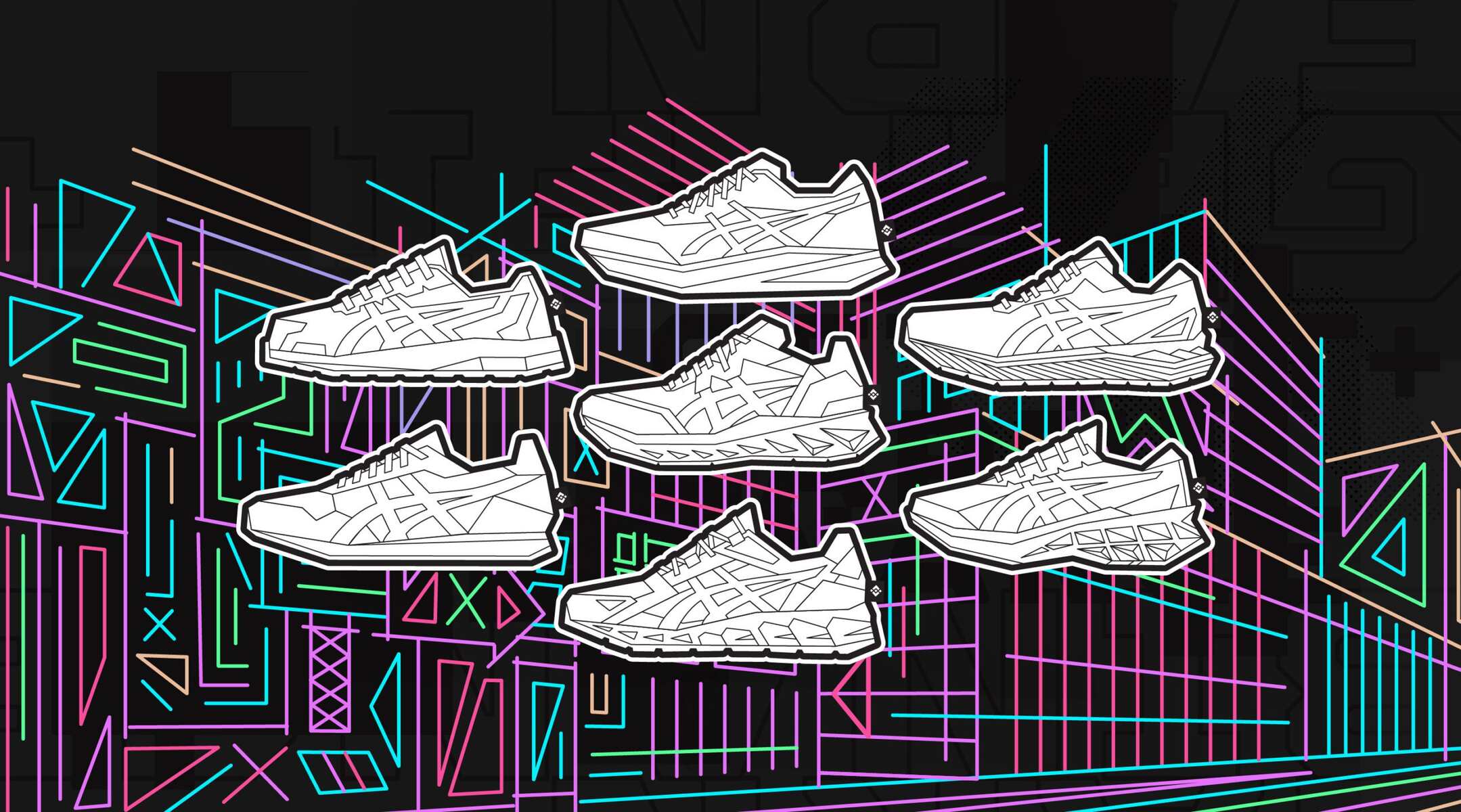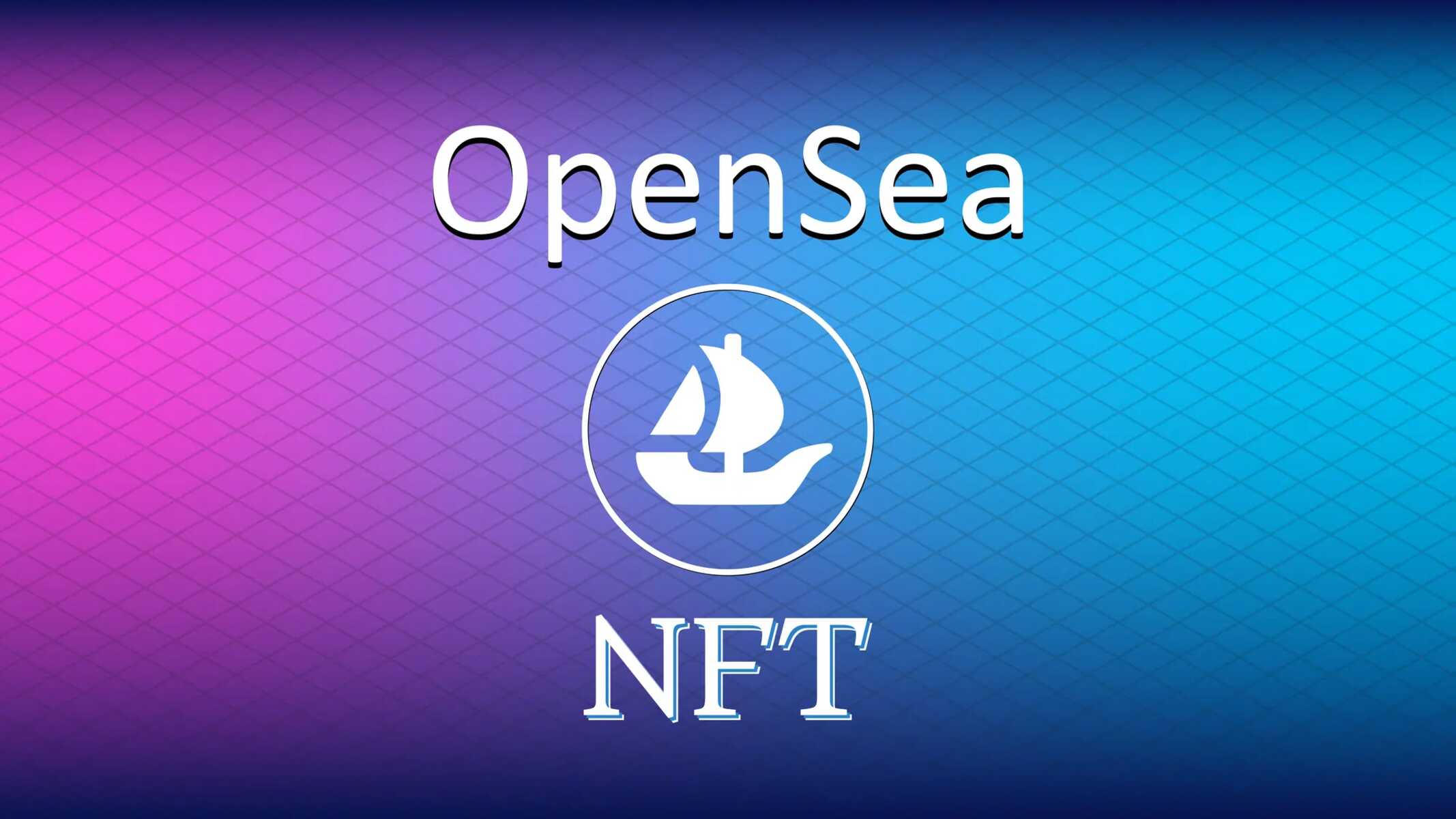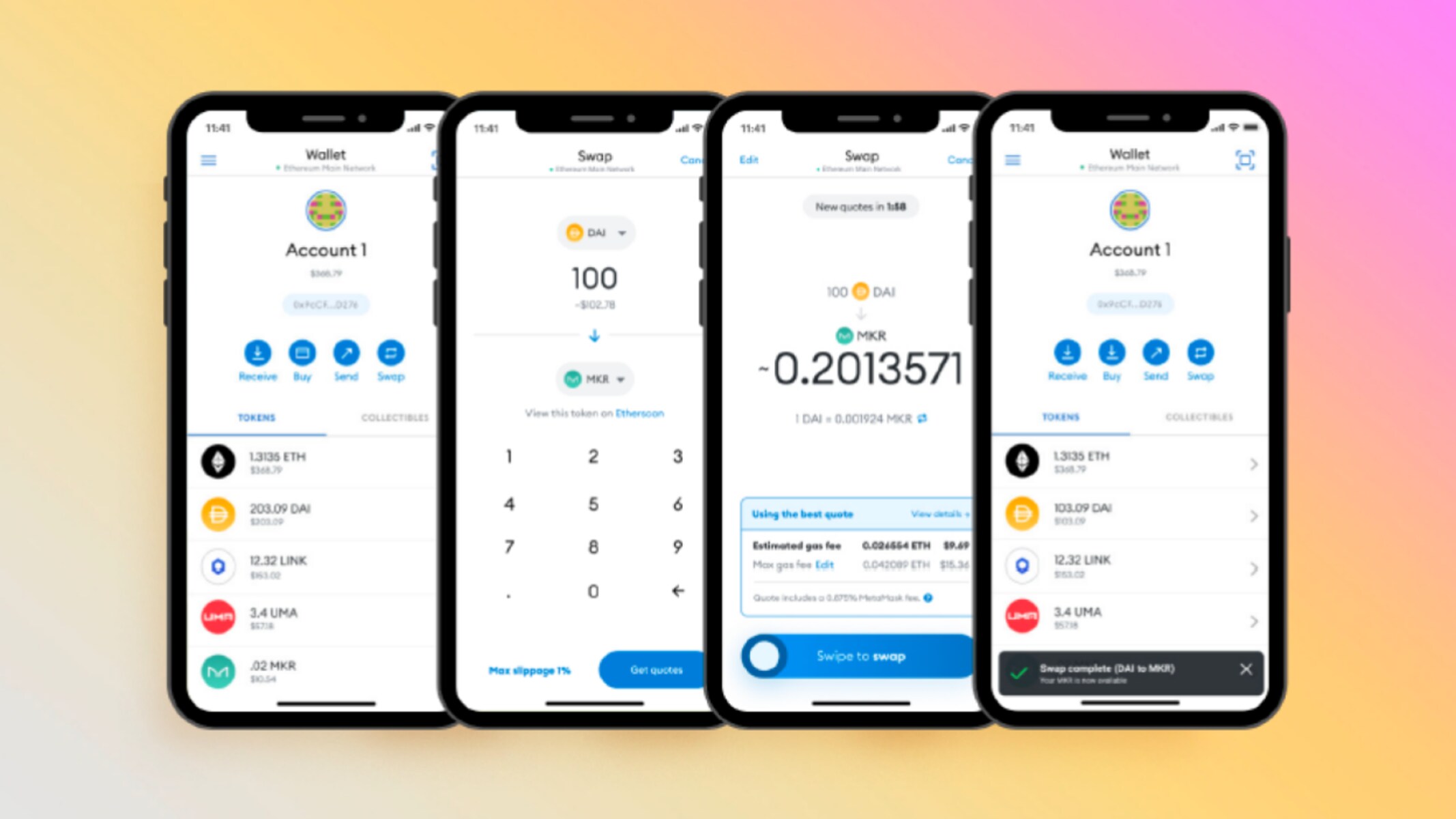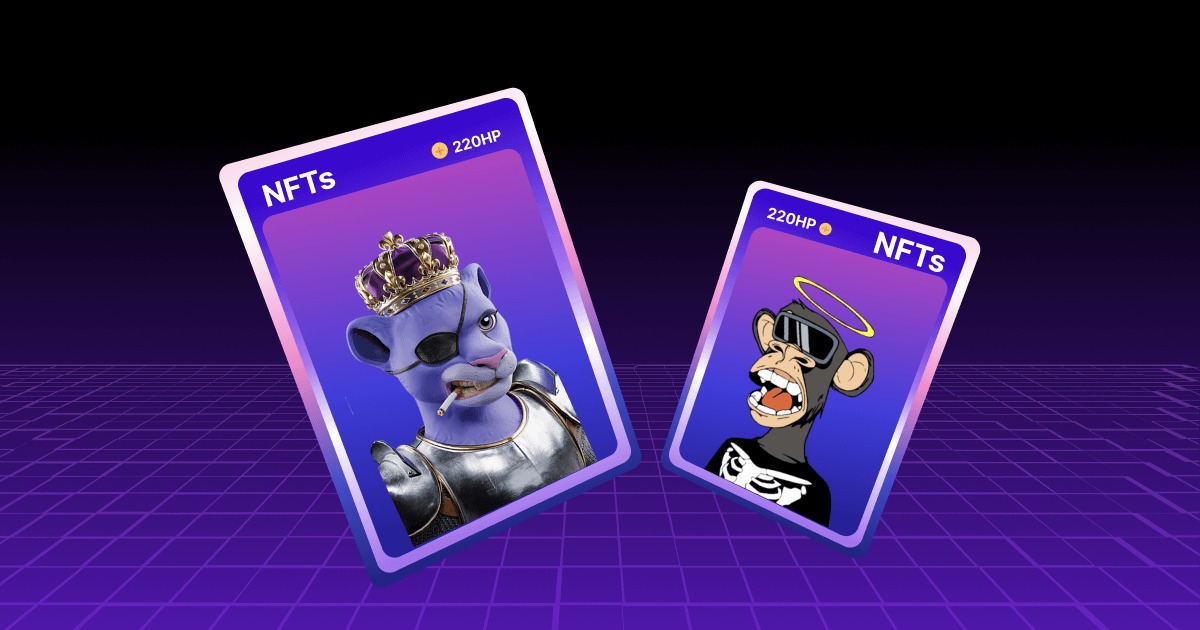Introduction
Welcome to the fascinating world of NFTs! If you’ve been following the latest developments in the digital art and collectibles space, you’ve probably come across the term “NFT” quite frequently. NFTs, or Non-Fungible Tokens, have taken the art world by storm, revolutionizing the way we perceive, buy, and sell digital assets.
An NFT is a unique digital asset that represents ownership or proof of authenticity of a digital item, such as artwork, music, videos, virtual real estate, and more. Unlike cryptocurrencies like Bitcoin or Ethereum, each NFT is distinct and cannot be exchanged on a one-to-one basis.
So, why would you want to create your own NFT collection? The reasons are plenty. First and foremost, creating an NFT collection provides artists, creators, and collectors with an incredible opportunity to showcase their talent, imagination, and creativity in the digital realm. It allows you to establish a unique digital presence and gain recognition in the growing NFT community.
Moreover, NFTs have opened up new possibilities for artists to monetize their work directly and gain a fair share of the profits. By tokenizing their art and selling it as NFTs, artists can benefit from royalties and secondary market sales, ensuring a sustainable income stream.
Additionally, collectors are drawn to NFTs as a way to own exclusive, digital assets that can be displayed, traded, or even used within virtual environments. The limited supply and uniqueness of NFTs make them highly desirable among collectors who seek digital items that hold both sentimental and investment value.
In this article, we will guide you through the process of creating your very own NFT collection. From planning and choosing the right platform to marketing, selling, and engaging with your community, we will cover all the essential steps to help you navigate the exciting world of NFTs.
So, whether you’re an artist looking to embrace the digital revolution or a collector searching for the next unique addition to your collection, get ready to dive into the world of NFTs and unlock endless possibilities!
What is an NFT?
If you’re new to the world of NFTs, you might be wondering what exactly they are and why they have gained such widespread attention. NFT stands for Non-Fungible Token, which essentially means that it is a one-of-a-kind digital asset that cannot be replicated or exchanged on a like-for-like basis.
Unlike cryptocurrencies such as Bitcoin or Ethereum, which are interchangeable and hold the same value, each NFT has its own distinct value and characteristics. Think of it like a digital certificate of authenticity or a unique digital collectible. NFTs are typically built on blockchain technology, which provides a decentralized and transparent system for recording ownership and transactions.
One of the key features of NFTs is their ability to prove ownership and authenticity of digital assets. When you own an NFT, you have a verifiable record that you are the rightful owner of a specific piece of digital content, be it art, music, videos, virtual real estate, or even virtual items within a game.
Furthermore, NFTs have introduced a new way for creators to monetize their digital work. Artists can tokenize their art by transforming it into an NFT and selling it directly to collectors. This allows artists to earn royalties on future sales, ensuring ongoing revenue from their creations.
Another exciting aspect of NFTs is the ability to provide scarcity and provenance in the world of digital assets. Traditionally, digital files can be easily copied and shared without any control over their distribution. However, NFTs solve this problem by creating a unique, traceable, and verifiable record of ownership.
Additionally, NFTs have attracted attention from both collectors and investors. Collectors are drawn to the uniqueness and exclusivity of owning a specific digital item. NFTs give collectors the opportunity to showcase their ownership, display their collections, and even resell their assets in secondary markets.
Investors, on the other hand, see NFTs as a potential investment opportunity. Just like traditional art or collectibles, the value of NFTs can appreciate over time. Some NFTs have fetched astronomical prices in auctions, making headlines in the mainstream media.
Overall, NFTs have opened up new avenues and possibilities for creators, collectors, and investors in the digital realm. They have revolutionized the way we buy, sell, and own digital assets, providing a tangible and exciting way to engage with digital art and collectibles.
In the following sections, we will delve deeper into the process of creating your own NFT collection, exploring the planning, creation, marketing, and selling aspects to help you navigate this exciting space.
Why Create an NFT Collection?
Creating an NFT collection offers a multitude of enticing benefits and opportunities for artists, collectors, and enthusiasts alike. Let’s explore some of the key reasons why you should consider creating your own NFT collection:
Showcase Your Creativity and Talent: By creating an NFT collection, you have the opportunity to showcase your unique artistic vision, talent, and creativity to a global audience. NFT platforms provide a stage for artists and creators to display their digital artwork, music, videos, or any other form of digital content. It opens up a world of possibilities for self-expression and allows you to connect with an audience that appreciates and values digital art.
New Revenue Streams: One of the most significant advantages of creating an NFT collection is the potential to generate income. By tokenizing your creations and selling them as NFTs, you can earn money through initial sales. Furthermore, with the implementation of resale royalties, you can continue to receive a percentage of the sale price each time your NFT is sold in the secondary market. This additional revenue stream can provide a sustainable income for artists, allowing them to focus on their craft and continue creating.
Establish Your Digital Presence: The NFT space is a rapidly growing community filled with artists, collectors, and enthusiasts. By creating an NFT collection, you can establish your digital presence and gain recognition within this vibrant ecosystem. Engaging with the NFT community through social media, online forums, and virtual events can help you build a network of like-minded individuals and expand your reach as an artist or creator.
Ownership and Authenticity: NFTs offer a unique way to prove ownership and authenticity of digital assets. As an artist, creating an NFT collection allows you to establish a verifiable record of ownership for your work. This adds value and trust to your digital creations, giving collectors confidence in their investment. Additionally, NFTs help combat issues of piracy and unauthorized replication, ensuring that your work remains unique and protected in the digital space.
Connect with Collectors: NFTs have attracted a growing community of collectors who are eager to own unique digital assets. Creating an NFT collection allows you to connect directly with collectors who have an appreciation for your style and artistic vision. Building relationships with collectors can lead to long-term collaborations, commission opportunities, and a dedicated audience that supports your work.
Explore New Creative Frontiers: NFTs have blurred the boundaries between art, technology, and innovation. Creating an NFT collection pushes you to explore new creative frontiers and experiment with different mediums and formats. The digital nature of NFTs allows for interactive and immersive experiences, enabling you to push the boundaries of traditional art and create captivating digital worlds.
With these advantages in mind, creating an NFT collection holds immense potential for artists, collectors, and enthusiasts. It opens up a whole new realm of artistic possibilities and provides a platform to share, monetize, and connect with a global audience. Whether you’re an established artist or just starting your creative journey, now is the perfect time to dive into the world of NFTs and create your very own NFT collection.
Planning Your NFT Collection
Planning is a crucial step in creating an impactful and successful NFT collection. Take the time to carefully consider and strategize the following aspects before diving into the creation process:
Concept and Theme: Determine the overarching concept and theme for your NFT collection. This will give your collection a cohesive and recognizable identity. Think about what inspires you as an artist or creator and how you can translate that into a captivating collection. Whether it’s a specific style, subject matter, or narrative, having a clear concept will guide your creative decisions.
NFT Specifications: Consider the technical specifications and requirements of the NFTs you plan to create. Different platforms may have different guidelines for file formats, sizes, and attributes. Ensure that your artwork, music, or any other digital content meets the platform’s specifications to ensure a smooth and seamless uploading process.
Editions and Rarity: Decide whether you want to create unique, one-of-a-kind NFTs or multiple editions of the same piece. Determining the rarity of your NFTs can add value and exclusivity to your collection. You could consider creating limited editions, artist proofs, or even rare variants to entice collectors.
Collaboration Opportunities: Explore potential collaboration opportunities within the NFT community. Working with other artists, musicians, or creators can bring fresh perspectives and expand your reach. Collaborative NFT collections often attract a wider audience and provide a shared platform for mutual promotion.
Engaging Storytelling: Craft a compelling story or narrative that accompanies your NFT collection. Storytelling can enhance the emotional connection between your artwork and the audience. Consider the background, inspiration, or meaning behind each piece and weave these narratives into the descriptions or accompanying content for your NFTs.
Timeline and Release Strategy: Develop a timeline and release strategy for your NFT collection. Determine whether you want to release all the NFTs at once or gradually introduce them over a period of time. Creating anticipation and hype around your collection can generate buzz and increase the demand for your NFTs.
Pricing and Royalties: Set a pricing strategy for your NFTs. Research the market and consider factors such as the quality of your work, your reputation as an artist, and the demand for similar NFTs. Additionally, decide on the royalty percentage you wish to receive from secondary market sales. This will ensure that you continue to benefit from the appreciation of your NFTs even after the initial sale.
Legal and Copyright Considerations: Familiarize yourself with the legal and copyright implications of creating and selling NFTs. Ensure that you have the rights to the content you are tokenizing and that you comply with any relevant intellectual property laws. Understanding the legal aspects will help protect your work and avoid any potential disputes in the future.
By thoroughly planning your NFT collection, you set yourself up for success and maximize the impact of your digital creations. This stage allows you to define your artistic vision, strategize your release, and ensure that your NFTs align with your creative aspirations and objectives.
Choosing the Right Platform
Choosing the right platform to showcase and sell your NFT collection is crucial for its success and visibility within the NFT community. Here are some factors to consider when selecting an NFT platform:
Marketplace Reputation: Research the reputation and credibility of the NFT marketplace you are considering. Look for platforms that have a strong track record, established user base, and positive feedback from artists and collectors. A reputable platform will provide a trustworthy environment for buying and selling NFTs.
Platform Fees and Costs: Evaluate the fees and costs associated with the platform. NFT marketplaces typically charge a fee for every transaction, which can vary from platform to platform. Consider the listing fees, transaction fees, and any additional costs associated with minting and promoting your NFTs. Ensure that the potential returns outweigh the expenses.
Platform User Interface and Experience: Explore the user interface and experience of different platforms. A user-friendly and intuitive platform will make it easier for you to navigate and manage your NFTs. Look for platforms that provide robust features for showcasing and organizing your collection, as well as seamless integration with external wallets for easy buying and selling.
Platform Audience and Community: Consider the target audience and community of the platform. Some platforms cater to specific niches, while others have a broader user base. Depending on your target market, you may want to choose a platform that aligns with your artistic style and attracts the type of collectors or enthusiasts you want to engage with.
Secondary Market Support: Check if the platform supports a secondary market for reselling NFTs. A vibrant secondary market can provide ongoing opportunities for collectors and investors to trade your NFTs, potentially increasing their value over time. Consider platforms that have active secondary markets and offer features like royalties for artists on secondary sales.
Platform Promotion and Visibility: Evaluate the promotional and visibility opportunities provided by the platform. Some platforms have established marketing campaigns, partnerships, or events that can help promote your NFT collection to a wider audience. Look for platforms that offer marketing support or have a strong presence on social media and within the NFT community.
Platform Terms and Conditions: Carefully review the terms and conditions of the platform before signing up. Pay attention to the rights and licensing you retain over your artwork, the duration of your listing, and any exclusivity requirements. Ensure that the platform aligns with your goals and respects your rights as an artist or creator.
Keep in mind that you are not limited to using just one platform. Some artists and creators choose to list their NFT collections on multiple platforms to increase exposure and reach a broader audience. However, managing multiple platforms can require additional time and effort.
Take your time to research and consider these factors when selecting the right NFT platform for your collection. Choosing the platform that best aligns with your goals and values will help maximize the visibility, reach, and success of your NFT collection.
Creating and Uploading your NFTs
Once you have planned your NFT collection and chosen the right platform, it’s time to start creating and uploading your NFTs. Follow these steps to ensure a smooth process:
Prepare Your Artwork: If you are showcasing visual art, make sure your artwork is ready for digital display. Ensure that it is in a high-resolution format and optimized for online viewing. If you are creating music, videos, or other digital content, ensure that they are in the appropriate file formats and meet any platform-specific requirements.
Metadata and Description: Add metadata and descriptions to your NFTs. Metadata includes details such as the title, artist name, description, and any additional attributes that provide context or information about the NFT. The description is an opportunity to share the story, inspiration, or meaning behind the artwork. Engaging and informative descriptions can help attract potential buyers and collectors.
Minting the NFTs: Minting an NFT involves creating a digital token on the blockchain that represents your artwork or content. Most platforms have built-in minting processes that guide you through the procedure. During this step, you will typically upload the digital file, fill in the necessary details, and confirm the creation of the NFT. The platform will generate a unique token and record the ownership and transaction details on the blockchain.
Setting the Price: Determine the price for your NFTs. Consider factors such as the quality of your work, the demand for similar NFTs, and your reputation as an artist. Setting a reasonable and competitive price can attract potential buyers while ensuring that your work is valued appropriately. Some platforms allow for flexible pricing options, such as auctions or fixed prices.
Connecting Your Wallet: Connect your digital wallet to the platform. A digital wallet is where your NFTs are stored and managed. It also allows you to engage in transactions, including buying, selling, and transferring NFTs. Most platforms integrate with popular digital wallets such as MetaMask or Trust Wallet. Follow the platform’s instructions to connect your wallet and ensure a secure and seamless interaction.
Upload and Publish: Once your NFT is minted, upload it to the platform and publish it to the marketplace. Provide high-quality visuals or previews of your artwork to attract potential buyers. Include captivating headlines, tags, and keywords that accurately describe your work and make it discoverable within the platform’s search functionality.
Verify and Validate: After uploading your NFTs, take the time to verify and validate the information. Check that all the details, including the title, description, and pricing, are correct. Preview your NFTs to ensure they are displayed accurately and as intended. Some platforms also provide the option to review the metadata linked to your NFTs, ensuring all the relevant information is properly recorded.
Remember to double-check the platform-specific guidelines and recommendations for creating and uploading NFTs. Each platform may have its own requirements and best practices, so familiarize yourself with the process to ensure a successful listing and representation of your NFT collection.
Creating and uploading your NFTs is an exciting step in the process, as it allows you to showcase your artistic vision and share your digital creations with the world. Once your NFTs are live on the platform, it’s time to move on to the next phase: setting up and promoting your NFT collection.
Setting Up your Collection
Setting up your NFT collection is an important step in presenting your artwork or digital content in a cohesive and organized manner. Here are some key aspects to consider when setting up your collection:
Create Collection Categories: Categorize your NFTs into different collections or series based on themes, styles, or subjects. This helps potential buyers and collectors navigate your collection more easily and find NFTs that align with their interests. For example, you might have separate collections for abstract art, landscape photography, or music compositions.
Curate the Collection: Take a thoughtful approach to curating your collection. Consider the flow, coherence, and visual appeal when arranging the NFTs. Place your most impactful or significant pieces at the forefront, ensuring that they capture the viewer’s attention. You can also group related NFTs together to tell a story or create a narrative within your collection.
Set Collection Display Details: Customize the display details for your collection. This includes selecting a cover image or thumbnail that represents the overall aesthetic or essence of the collection. You can also set a unique description for the collection, providing an overview or context for the NFTs included. These elements contribute to the overall presentation and can attract potential buyers to explore further.
Highlight Featured NFTs: Showcase select NFTs as featured or spotlight items in your collection. These can be your most recent releases, bestsellers, or personal favorites. Featuring specific NFTs can generate additional visibility and draw attention to particular pieces that you want to promote or prioritize within your collection.
Provide Collection Insights: Offer insights or additional information about your collection to engage potential buyers and collectors. This can include background stories, artistic inspirations, or any unique aspects of the collection. Providing these insights can create a connection between the viewer and your artwork, making it more meaningful and enticing.
Include Artist Biography: Craft a compelling artist biography to accompany your collection. This provides potential buyers with a glimpse into your artistic journey, background, and achievements. Sharing your story can create a personal connection and establish trust with collectors, increasing the perceived value of your NFTs.
Consider Limited Drops or Editions: Offer limited drops or editions within your collection to create a sense of rarity and exclusivity. This can generate excitement and demand among collectors who want to own unique, limited-edition NFTs. Clearly communicate the availability and scarcity of these limited drops to encourage timely purchases.
Engage with Collectors: Actively engage with your collectors and respond to their inquiries or feedback. Offer a way for collectors to reach out to you, whether through social media, email, or a dedicated communication platform. Building and nurturing relationships with your audience can result in repeat collectors and potential collaborations in the future.
Regularly Update and Refresh: Keep your collection fresh and current by adding new NFTs or rotating existing ones. Regular updates or releases can stimulate interest and encourage collectors to revisit your collection. Consider creating a schedule to ensure a consistent flow of new additions and updates.
Remember that the setup of your collection should be reflective of your artistic vision and intent. Tailor the experience to create an immersive and engaging environment that invites collectors to explore and appreciate your NFTs.
With your collection set up, it’s time to focus on marketing and promoting your NFT collection to increase its visibility and reach within the NFT community.
Marketing and Promoting your NFT Collection
Marketing and promoting your NFT collection is essential to increase its visibility, attract potential buyers, and build a dedicated fanbase. Here are some effective strategies to market and promote your NFT collection:
Utilize Social Media: Leverage the power of social media platforms to showcase and promote your NFT collection. Create dedicated accounts or profiles on platforms like Twitter, Instagram, and Discord to connect with your audience. Share high-quality visuals of your NFTs, behind-the-scenes content, and updates about your collection. Engage with your followers by responding to comments, organizing giveaways, and collaborating with other artists.
Create a Website or Portfolio: Establish a dedicated website or portfolio to showcase your NFT collection. This serves as a central hub where potential buyers and collectors can explore your artworks, read about your artistic journey, and make direct purchases. Include an artist statement, biography, and detailed information about each NFT in your collection. Optimize the website for search engines to improve its discoverability.
Collaborate with Influencers and Collectors: Collaborate with influencers, collectors, or other artists within the NFT community. Partnering with individuals who have a strong following or influence can expose your NFT collection to a wider audience. Consider collaborations for cross-promotions, joint releases, or even curated collections. These partnerships can introduce your work to new collectors and increase your reach within the NFT ecosystem.
Participate in NFT Communities and Events: Engage with NFT communities by participating in discussions, sharing your knowledge, and attending virtual events. Join online forums, Discord servers, and Telegram groups dedicated to NFTs to connect with fellow artists and enthusiasts. Stay updated with industry news, trends, and upcoming events, as these can provide opportunities to showcase your collection, gain exposure, and network with potential buyers and collaborators.
Share your NFTs on NFT Marketplaces: While listing your NFTs on a marketplace is important, don’t solely rely on the platform’s built-in discovery features. Promote your NFT collection on external platforms or communities related to art, technology, or digital assets. Share the links or previews of your NFTs to attract attention and direct interested buyers to your listed NFTs on the marketplace.
Engage with your Email List and Subscribers: If you have an existing email list or subscriber base, make use of it to promote your NFT collection. Send out newsletters or targeted emails to this audience, sharing updates about new releases, features, or exclusive offerings. Provide value in your emails beyond just promoting your collection by sharing insights, behind-the-scenes stories, or exclusive content.
Tap into Media Opportunities: Explore media opportunities to gain exposure for your NFT collection. Reach out to art publications, blogs, podcasts, and mainstream media outlets that cover NFTs or digital art. Pitch your story, share your unique perspective, or offer interviews to media representatives. Media coverage can help introduce your collection to a broader audience and establish your credibility as an artist in the NFT space.
Cross-Promote with Physical Art or Creative Events: Leverage the synergy between physical art and NFTs by cross-promoting your NFT collection at physical art exhibitions, galleries, or creative events. Display QR codes or links to your NFT collection alongside your physical artworks to introduce visitors to your digital creations. Consider hosting virtual events or workshops to educate people about NFTs and your collection.
Engage with Feedback and Reviews: Actively engage with feedback and reviews from collectors and buyers of your NFTs. Pay attention to their comments, questions, and suggestions. Engaging with your audience demonstrates that you care about their experience and value their input. Addressing their concerns or taking their feedback into consideration can help build trust and loyalty.
Remember that marketing and promoting your NFT collection require consistency, persistence, and adaptability. Experiment with different strategies, analyze the results, and refine your approach based on what works best for your specific audience and goals.
By effectively marketing and promoting your NFT collection, you can maximize its exposure, attract potential buyers and collectors, and establish your presence within the NFT community.
Engaging with your NFT Community
Building a strong and engaged community around your NFT collection is crucial for its long-term success. Engaging with your NFT community not only fosters connections with collectors and enthusiasts but also creates a supportive network that can help promote and elevate your work. Here are some effective ways to engage with your NFT community:
Communicate on Social Media Platforms: Regularly interact with your community on social media platforms such as Twitter, Instagram, and Discord. Respond to comments, messages, and mentions to show your appreciation and build relationships. Share updates, stories, and behind-the-scenes content to provide exclusive insights into your creative process and keep your community engaged and excited about your work.
Organize Virtual Events and Giveaways: Host virtual events, live streams, or Q&A sessions to connect more directly with your community. Use platforms like YouTube, Twitch, or Clubhouse to interact with your audience in real-time. Consider organizing giveaways, where you can reward your community members with exclusive NFTs, merchandise, or other special offerings as a way to show your gratitude and foster engagement.
Create a Dedicated Discord or Telegram Group: Set up a dedicated Discord or Telegram group for your community to come together and connect. These group platforms allow for real-time discussions, collaborations, and the sharing of insights or resources. Encourage your community members to engage with one another, share their experiences, and discuss topics related to your NFT collection or the NFT space in general.
Show Appreciation to your Collectors: Recognize and show appreciation for your collectors by highlighting their purchases and supporting their work or collections. Give shoutouts on social media, share images or testimonials of your NFTs in their possession, and publicly thank them for their support. This gesture not only strengthens your relationship with existing collectors but also attracts the attention of prospective buyers who appreciate your engagement and support.
Collaborate with Artists and Creators: Seek opportunities to collaborate with other artists and creators within the NFT community. Collaborative projects can expand your reach, introduce your work to new audiences, and create unique offerings that excite your community. Jointly organize exhibitions, releases, or digital art drops to cross-pollinate your fanbases and spark creativity through collaboration.
Offer Exclusive Access and Rewards: Provide your community with exclusive access to your NFT drops, previews, or special editions before the general public. This creates a sense of exclusivity and rewards your most dedicated fans. Consider creating loyalty programs or tiers of benefits for community members who actively engage with your work, such as discounts, early access, or personalized experiences.
Listen and Incorporate Feedback: Actively listen to the feedback and suggestions from your community. Encourage open dialogue and make an effort to incorporate their input into your creative process and decision-making. This collaborative approach fosters a sense of ownership and involvement, making your community feel valued and appreciated. Additionally, it can lead to the improvement of your NFT collection based on the desires and preferences of your audience.
Support and Engage with Other NFT Artists: Show support and engage with other artists and creators within the NFT space. Follow, share, and promote their work, attend their events, and provide constructive feedback when appropriate. Building relationships with fellow artists not only strengthens the overall NFT community but also exposes you to new ideas, collaborations, and potential cross-promotion opportunities.
Attend and Participate in Virtual Events and Exhibitions: Actively participate in virtual events, exhibitions, conferences, and online auctions related to NFTs. Attend panels, workshops, and seminars to expand your knowledge, network with industry professionals, and connect with potential buyers and collectors. Engaging with these events demonstrates your commitment to the NFT space and positions you as an active member of the community.
Remember, community engagement is a two-way street. It requires consistent effort, genuine interest, and mutual support to foster a strong and thriving community around your NFT collection. By engaging with your community, you cultivate a network of enthusiastic supporters who not only appreciate your work but also become ambassadors for your collection.
Selling and Trading your NFTs
Once you have created and established your NFT collection, it’s time to focus on selling and trading your NFTs. This process involves reaching potential buyers, setting prices, and navigating the secondary market. Here are some key strategies to consider:
Set Clear and Competitive Prices: Determine the prices for your NFTs based on factors such as the quality of your work, demand for similar NFTs, and your reputation as an artist. Research the market to ensure your prices are competitive. Consider offering a range of prices for different editions or levels of exclusivity to cater to various buyers.
Launch Direct Sales: Initiate direct sales of your NFTs through your website or portfolio. Provide easy-to-use purchasing options, clear instructions, and a streamlined checkout process. Consider accepting multiple forms of cryptocurrency or secure payment methods to accommodate different buyer preferences.
Participate in Auctions and Drops: Explore the option of participating in NFT auctions or drops hosted by platforms or curated events. Auctions can create excitement and competition among collectors, potentially driving up the value of your NFTs. Drops, on the other hand, offer a fixed number of NFTs to be sold at a specific time, often fostering a sense of urgency to purchase.
Engage with the Secondary Market: Monetize the resale potential of your NFTs by engaging with the secondary market. Most NFT platforms allow for the resale and trading of NFTs, giving you the opportunity to earn royalties from subsequent sales. Continuously monitor the secondary market for your NFTs and engage with buyers and collectors interested in acquiring or trading your work.
Provide Enhanced Utility for NFT Holders: Consider offering additional utility or benefits to NFT holders to increase their value and appeal. This can include exclusive access to future drops, membership in a collector’s club, or access to curated events or digital content. Adding utility can incentivize collectors to hold onto your NFTs and potentially increase their resale value.
Collaborate with Resellers and Platforms: Partner with resellers or platforms that specialize in secondary market trading of NFTs. Engaging with established resellers or secondary market platforms can increase the visibility and exposure of your NFTs to a broader audience. Collaborations with reputable platforms or resellers can also offer benefits such as marketing support or access to exclusive collectors.
Promote Your NFT Sales: Actively promote your NFT sales through various marketing channels. Leverage your website, social media platforms, email lists, and NFT communities to announce new releases, special offers, or drops. Create engaging visuals, teaser videos, or limited-time incentives to capture the attention and interest of potential buyers.
Engage and Communicate with Buyers: Foster strong relationships with buyers by engaging and communicating with them. Respond to inquiries, email feedback, or questions in a timely manner. Show appreciation for their support and keep them informed about updates, upcoming releases, or exclusive offerings. Building trust and loyalty can lead to repeat buyers and referrals.
Monitor Industry Trends and Marketplaces: Stay informed about industry trends, evolving marketplaces, and emerging platforms. Continuously monitor the market to identify new opportunities, understand buyer preferences, and adapt your selling strategies accordingly. By staying ahead of the curve, you can position yourself to capitalize on emerging trends and take advantage of new buying and trading opportunities.
Remember, the NFT market is dynamic and ever-changing. Be flexible and adapt your selling and trading strategies based on buyer preferences, market conditions, and emerging trends. Regularly evaluate and adjust your approach to optimize the success of selling and trading your NFTs.
Conclusion
Creating an NFT collection is an exciting endeavor that allows artists, creators, and collectors to explore the world of digital art and collectibles in a new and innovative way. Throughout this journey, we have covered various aspects that are essential for a successful NFT collection.
From understanding what NFTs are and their significance in the digital art world to planning and choosing the right platform, we discussed the important steps involved in creating and uploading NFTs. We also explored the significance of setting up your collection, marketing and promoting it, engaging with the NFT community, and effectively selling and trading your NFTs.
Creating an NFT collection is not solely about tokenizing your digital content, but also about connecting with a community, building relationships, and establishing yourself as an artist or creator within the NFT ecosystem. Engaging with your community, including collectors, enthusiasts, and fellow artists, fosters a supportive network that can elevate your work and provide opportunities for growth.
Throughout the entire process, it’s important to stay adaptable, open to feedback, and aware of emerging trends in the NFT space. The NFT market is continually evolving, and staying informed will help you navigate the dynamic landscape and make informed decisions for your NFT collection.
As the NFT space continues to expand and gain mainstream attention, it is an opportune time to unleash your creativity, share your unique digital creations, and connect with a global audience. By embracing the possibilities offered by NFTs, you can establish your digital presence, monetize your work, and change the way art is bought and sold in a digital age.
So, whether you’re an artist looking to pioneer the digital art movement or a collector searching for the next exclusive addition to your collection, take the plunge into the world of NFTs. Create, inspire, and engage with the NFT community as you embark on this exciting journey of digital art and collectibles.







